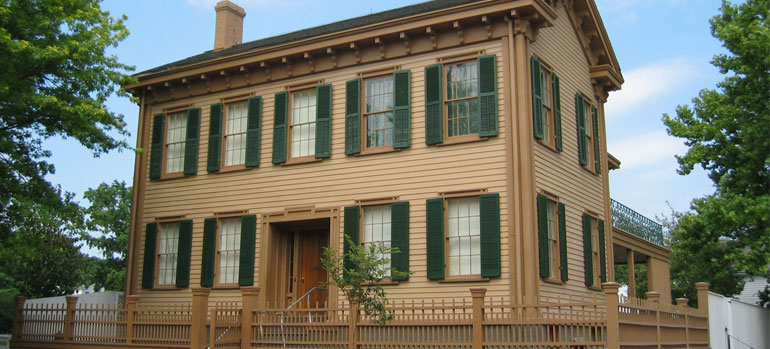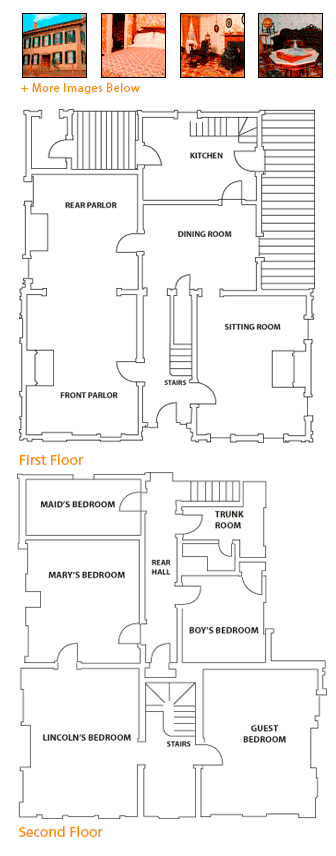

House Tour From 1855-56, the Lincolns added the second story with three bedrooms and a master ‘his and hers’ bedroom suite. Visitors, some of whom came for several months, enjoyed the sunny guest room filled with mahogany furniture. Oldest son Robert had his own room for a few years before going to prep school and college. When he left, his younger brothers Willie and Tad moved from the trundle bed in their mother’s room to Robert’s room. This gave Mary more room for her sewing, privacy for dressing, or solitude for enduring her frequent migraine headaches. Having his own room meant Mr. Lincoln could do legal or political work at a desk in his room. The two-room suite gave privacy for bathing as there was no indoor plumbing yet. It also prevented the Lincolns from disturbing each other with their different schedules. Mr. Lincoln often worked well past midnight writing letters and speeches, especially as his inauguration approached. Mrs. Lincoln might need to rise early to do the daily cooking and baking, and get the children to school. After Mr. Lincoln was nominated for the presidency in May 1860, the house was overrun with newspaper reporters and well-wishers trying to learn more about Lincoln. That summer, Frank Leslie’s Illustrated Newspaper sent a reporter and artist to sketch the public rooms of the Lincoln home. Although many of the Lincolns’ original furnishings do not survive, the newspaper drawings gave researchers information to closely match the appearance of those rooms. A set of stereocards from 1865 were also useful to confirm some of the furniture’s appearance and provided views of wallpaper, carpeting and drapes. After the Lincolns Left After the Tiltons moved to Chicago in 1869, the house continued as rental property for several years. After Mary’s death in 1882, Robert, who lived in Vermont, tired of being an absentee landlord and fighting with a tenant who had turned the first floor into a paying museum. Robert deeded the house to the State of Illinois in 1887 for $1. His only stipulations were that it be kept in good repair and “free of access” so that anyone who wanted could visit his father’s house. The State conducted an extensive restoration from 1952-4 to open the upstairs to visitors. In 1972, after years of coordination by local, state, and federal officials, the house was transferred to the National Park Service. Through the years, notable figures have visited Lincoln Home National Historic Site, including many U.S. Presidents. |
 *Note: Adobe Flash Player is required to view the rooms. If you do not have the Flash Player installed on your computer, please click here to download it. |
||||||||||||||||||||||||||||||||||||||||||||||||||||||||||||||||||||||||||||||||||||||||||||||||||||||||||||
|
|||||||||||||||||||||||||||||||||||||||||||||||||||||||||||||||||||||||||||||||||||||||||||||||||||||||||||||




































